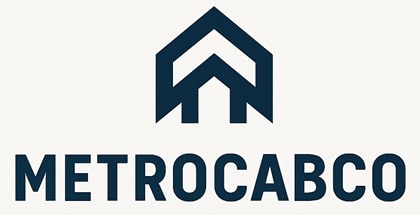Choosing between schema and obscurity is essential for effective communication and digital marketing. Schema provides a clear framework that enhances understanding and engagement, while obscurity can lead to misinterpretations and lost opportunities. By using schema, businesses can improve online visibility and differentiate themselves in competitive markets. This structured approach fosters trust and enhances user experience. Those interested in maximizing their communication strategies will find valuable insights on how to implement schema effectively.
Key Takeaways
- Schema enhances understanding and retention by connecting new information with existing knowledge, reducing cognitive load for users.
- Clear communication, supported by schema, prevents misinterpretation and misunderstandings that can derail opportunities.
- Implementing schema improves online visibility and engagement, allowing brands to stand out in a crowded digital landscape.
- Schema markup leads to rich snippets in search results, enhancing user experience and attracting more clicks.
- Choosing the right schema tailored to your audience ensures effective implementation and maximizes the benefits of structured data.
Understanding Schema: A Foundation for Clarity
Schema serves as a mental framework that organizes and interprets information, providing individuals with a structured approach to understanding complex concepts. This cognitive structure allows individuals to categorize experiences, facilitating easier retrieval of relevant information when needed.
By utilizing schemas, people can connect new information with existing knowledge, enhancing comprehension and retention. For instance, when encountering a new situation, individuals draw upon their schemas to predict outcomes and navigate interactions effectively.
Also Read
In educational contexts, schema theory underscores the importance of activating prior knowledge, enabling learners to build upon established frameworks. Ultimately, schemas foster clarity by simplifying the cognitive load, allowing individuals to process information more efficiently and make informed decisions in their daily lives.
The Dangers of Obscurity in Communication
Obscurity in communication poses significant risks, primarily through misinterpretation and misunderstandings.
When messages are unclear, the intended meaning can be lost, resulting in missed opportunities for collaboration and connection.
Recognizing these dangers is essential for effective communication in any context.
Misinterpretation Risks
Effective communication is essential, yet countless interactions are fraught with the potential for misinterpretation. Obscure language can lead to confusion, eroding trust and clarity.
The risks associated with such misinterpretations include:
- Ambiguity: Messages may be understood in multiple ways, leading to divergent interpretations.
- Context Ignorance: Without clear context, recipients may rely on their assumptions, which may not align with the sender’s intent.
- Emotional Misreading: Subtle cues can be misconstrued, resulting in unintended emotional responses.
- Decision-Making Errors: Poorly communicated ideas can lead to flawed conclusions, impacting business outcomes or personal relationships.
Addressing these risks requires a commitment to clarity, ensuring that messages are easily understood and accurately received.
Lost Opportunities
Clarity in communication is pivotal, yet obscured messages often lead to lost opportunities. When individuals fail to articulate their thoughts clearly, they risk misunderstandings that can derail potential collaborations, partnerships, or innovations. The following table illustrates various scenarios highlighting the consequences of unclear communication:
| Scenario | Lost Opportunity |
|---|---|
| Job Application | Missed interview invitations |
| Business Proposal | Rejected investment offers |
| Team Collaboration | Ineffective project outcomes |
| Customer Feedback | Unmet client needs |
| Networking Event | Lost connections and partnerships |
In each case, the inability to convey a clear message can stifle growth and limit success, emphasizing the necessity for clarity in all forms of communication.
How Schema Enhances Engagement
Although many website owners may overlook the importance of structured data, its implementation can greatly enhance user engagement. By utilizing schema markup, websites can provide search engines with clearer information, ultimately improving the user experience.
The following benefits illustrate how schema enhances engagement:
The benefits of schema highlight its powerful role in enhancing user engagement and interaction.
- Rich Snippets: Schema enables rich snippets, offering users more information at a glance, such as ratings and reviews.
- Improved Click-Through Rates: Enhanced search results increase the likelihood of users clicking on links.
- Better Content Discovery: Schema helps search engines understand the content better, leading to more accurate search results.
- Increased Trustworthiness: Structured data can improve the perceived credibility of a website, fostering user trust.
Incorporating schema can markedly boost user interaction and satisfaction.
The Role of Schema in Digital Marketing
As digital marketing continues to evolve, the integration of schema markup has emerged as a crucial strategy for enhancing online visibility and engagement.
Schema markup provides search engines with structured data about a website’s content, allowing them to display rich snippets in search results. This increased visibility can lead to higher click-through rates and improved user experience, as potential customers are presented with relevant information at a glance.
Additionally, schema helps differentiate brands in a crowded digital landscape by enabling them to convey unique attributes, such as reviews, events, and product specifications.
As businesses endeavor to capture consumer attention, leveraging schema markup is becoming increasingly essential for effective digital marketing strategies that prioritize clarity and relevance in communication.
Building Trust Through Clear Communication
Effective communication is a cornerstone of building trust in any business relationship. Clear and honest dialogue fosters an environment where both parties feel valued and understood.
To enhance trust through communication, consider the following strategies:
- Active Listening: Engage fully in conversations, showing genuine interest in the other party’s perspective.
- Transparency: Share relevant information openly to eliminate misunderstandings and build credibility.
- Consistency: Maintain a uniform message across all communication channels to reinforce reliability.
- Feedback: Encourage and provide constructive feedback to demonstrate commitment to improvement and collaboration.
Implementing Schema in Your Content Strategy
Implementing schema in a content strategy can greatly enhance visibility and search engine optimization. By structuring data using schema markup, businesses can provide search engines with context about their content, improving the chances of appearing in rich snippets. Effective implementation requires a clear understanding of various schema types and their relevance to the content.
| Schema Type | Purpose | Benefits |
|---|---|---|
| Article | Enhances article visibility | Featured snippets |
| Product | Showcases product details | Rich results in SERPs |
| Local Business | Boosts local search presence | Increases local engagement |
| Event | Promotes upcoming events | Attracts targeted audiences |
Through careful application, schema can greatly impact search performance and user engagement, making it a valuable addition to any content strategy.
Real-World Examples of Schema vs. Obscurity
The contrast between schema and obscurity is evident in various real-world scenarios.
Examples highlighting the effectiveness of schema reveal how structured data enhances visibility and user engagement.
On the other hand, obscure instances illustrate the pitfalls of lacking clarity in content presentation.
Schema in Action
Schema reveals its true potential when applied in real-world scenarios, contrasting sharply with the chaos of obscurity.
Businesses that implement schema markup experience enhanced visibility and user engagement, resulting in significant benefits.
Here are four notable examples of schema in action:
- E-commerce Platforms: Utilizing product schema helps search engines display price, availability, and reviews directly in search results, increasing click-through rates.
- Local Businesses: Local business schema enables companies to appear in local search results with essential information like hours, location, and ratings.
- Event Promotion: Event schema allows organizers to highlight key details such as dates, locations, and ticket availability, making events more discoverable.
- Recipe Websites: Recipes employing schema can showcase ingredients, cooking times, and user ratings, attracting more visitors and enhancing user experience.
Obscure Examples Explored
In the domain of digital visibility, the stark contrast between schema and obscurity becomes evident through real-world examples.
Consider a local bakery that employs structured data markup to highlight its menu and customer reviews. This bakery enjoys higher search engine rankings and increased foot traffic. Conversely, a competing bakery that neglects schema remains buried in search results, resulting in minimal online presence and dwindling customers.
Another example includes a tech startup utilizing schema to showcase its innovative products, enhancing its visibility in search results. In contrast, a similar startup without schema struggles to attract attention, appearing lost amidst countless competitors.
These examples illustrate how effectively leveraging schema can greatly enhance visibility, while obscurity ultimately limits growth potential.
Tips for Choosing Schema in Your Messaging
Choosing the right schema for messaging can greatly impact audience engagement and comprehension. The effectiveness of communication hinges on aligning schema with the audience’s existing knowledge and expectations.
The right schema enhances messaging effectiveness, aligning with audience knowledge and expectations for better engagement.
To achieve clarity, the following tips can be beneficial:
- Know Your Audience: Understand their background, interests, and familiarity with the subject matter.
- Select Relevant Schema: Choose schemas that resonate with the audience’s experiences and cultural context.
- Simplify Complexity: Break down intricate ideas into simpler components using familiar frameworks.
- Test and Iterate: Gather feedback on messaging effectiveness and refine schema choices for future communications.
FAQ
What Is the History of Schema in Communication?
The history of schema in communication traces back to cognitive psychology, where it describes frameworks that help individuals organize and interpret information. Over time, schema theory has influenced various fields, enhancing understanding of information processing and communication dynamics.
How Do Different Cultures Perceive Schema?
In the vast tapestry of communication, different cultures weave distinct perceptions of schema. While some embrace structured frameworks for understanding, others thrive in ambiguity, finding meaning in the fluidity of expression and context.
Can Schema Be Misinterpreted?
Misinterpretation can occur when individuals rely on preconceived frameworks, leading to skewed perceptions. Cultural backgrounds and personal experiences may further influence understanding, resulting in varied interpretations that deviate from the intended meaning or context.
What Tools Can Help Implement Schema Effectively?
In a world echoing the confusion of a modern Babel, tools like JSON-LD, Microdata, and RDFa serve as bridges. They facilitate the effective implementation of schema, enhancing clarity and fostering understanding across digital landscapes.
How Does Schema Impact SEO Rankings?
Schema greatly enhances SEO rankings by providing search engines with structured data, allowing for better understanding of webpage content. This improved clarity can lead to richer search results, ultimately increasing visibility and click-through rates for websites.
Conclusion
In the domain of communication, choosing schema over obscurity is akin to a lighthouse guiding ships through treacherous waters. Just as sailors rely on clear signals to navigate safely, audiences seek clarity to engage effectively with content. A study found that messages framed with structured schema lead to a 40% increase in audience retention. By embracing clarity, communicators can steer their messages toward success, ensuring they are not lost in the fog of confusion.













